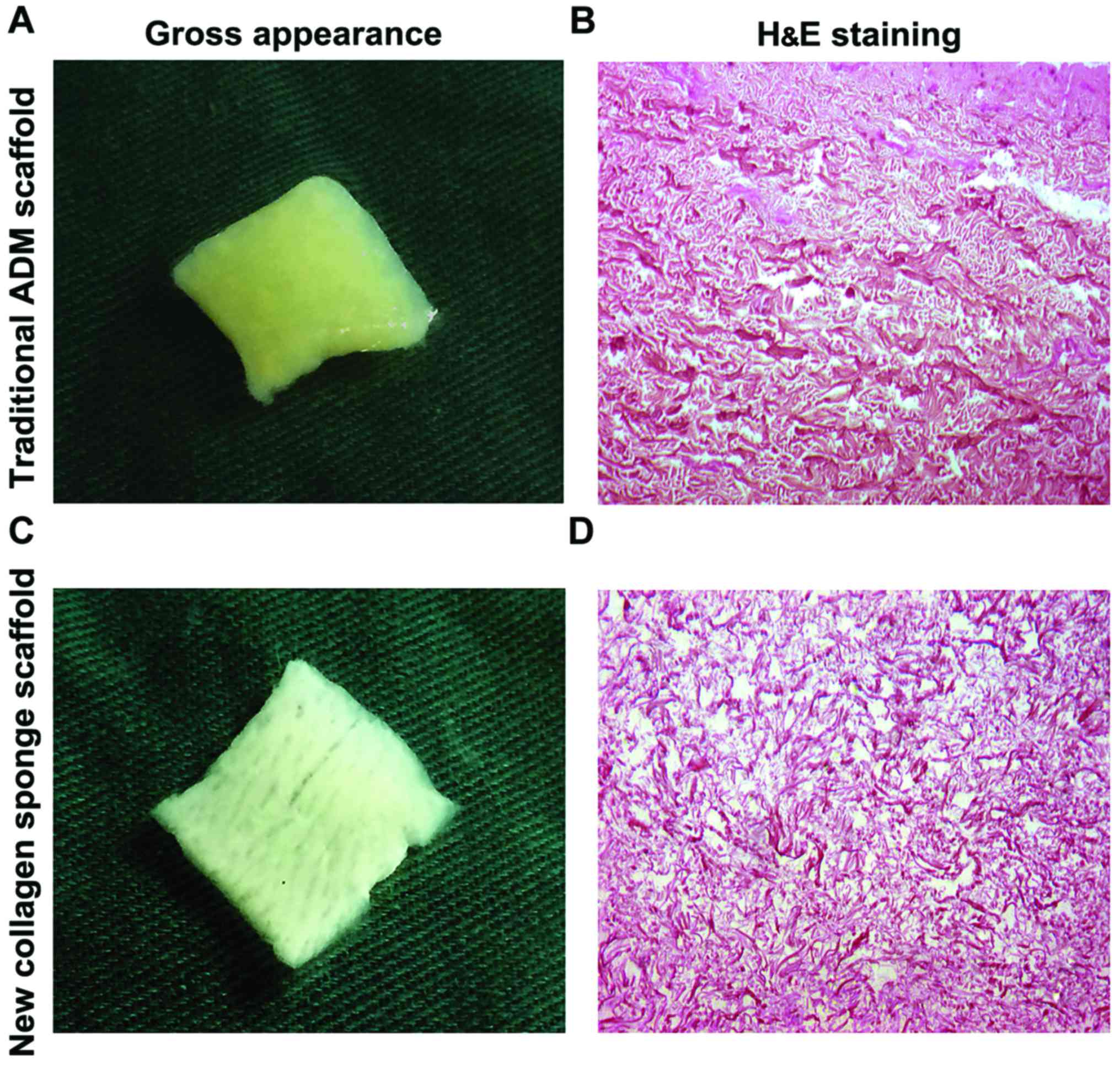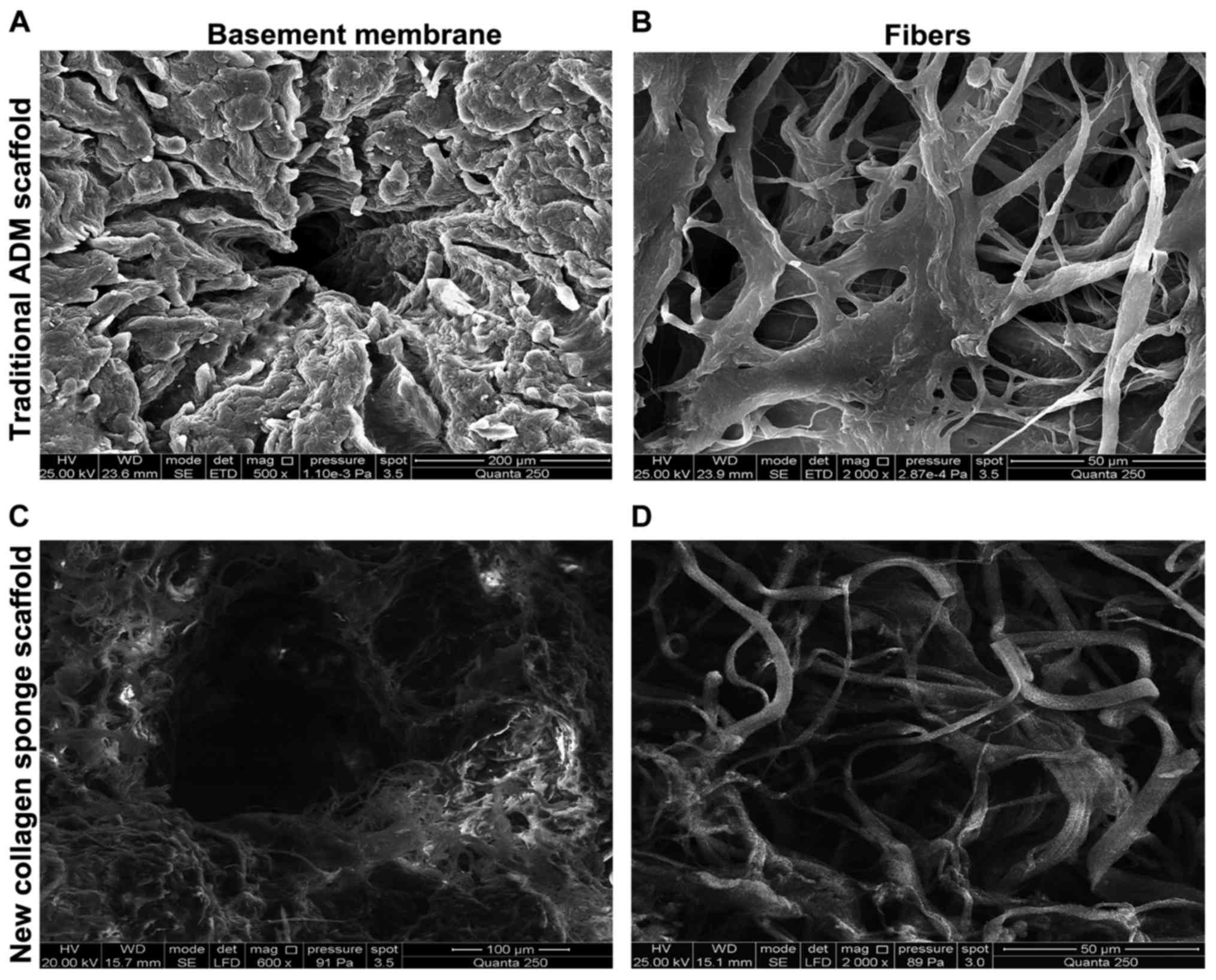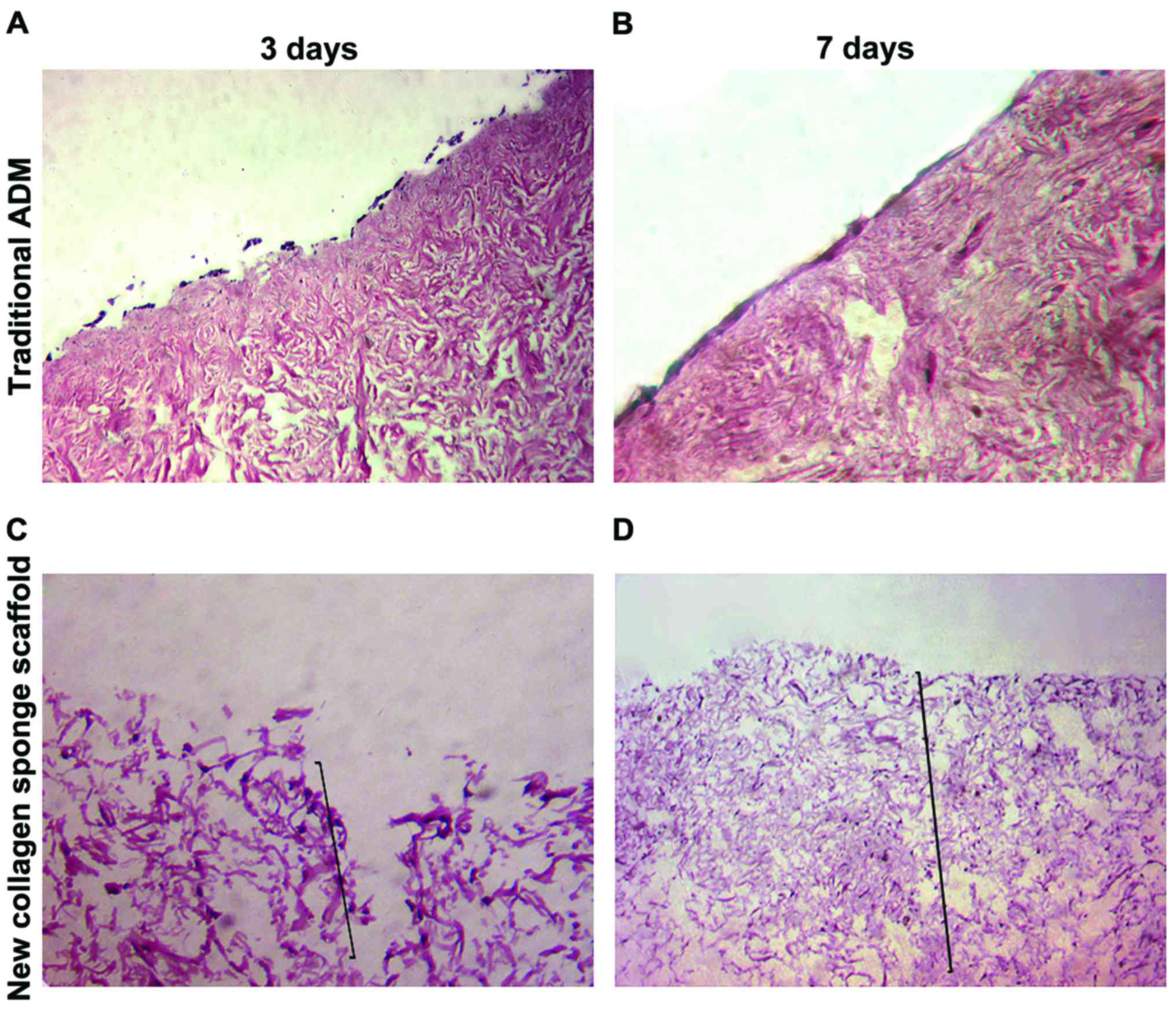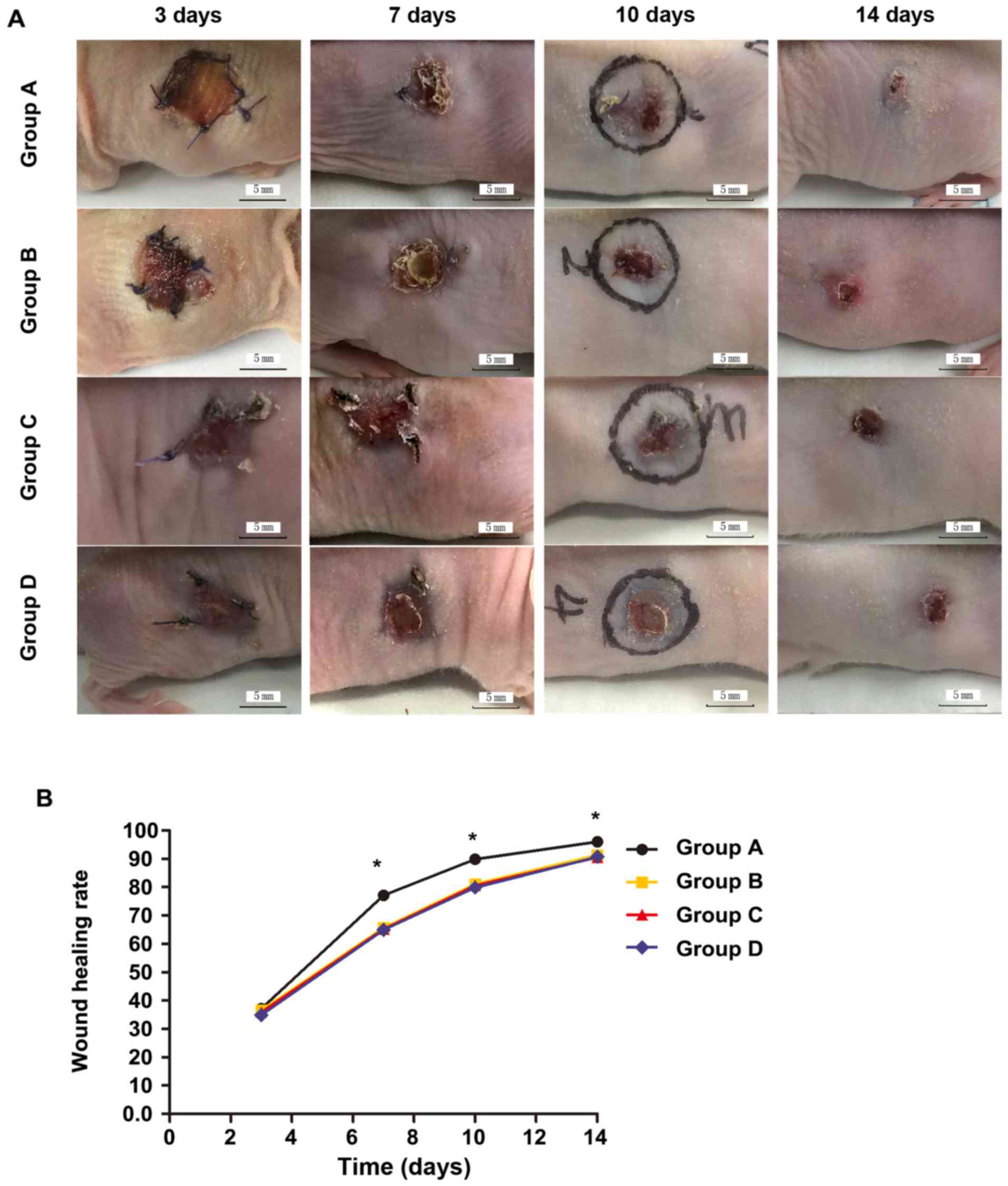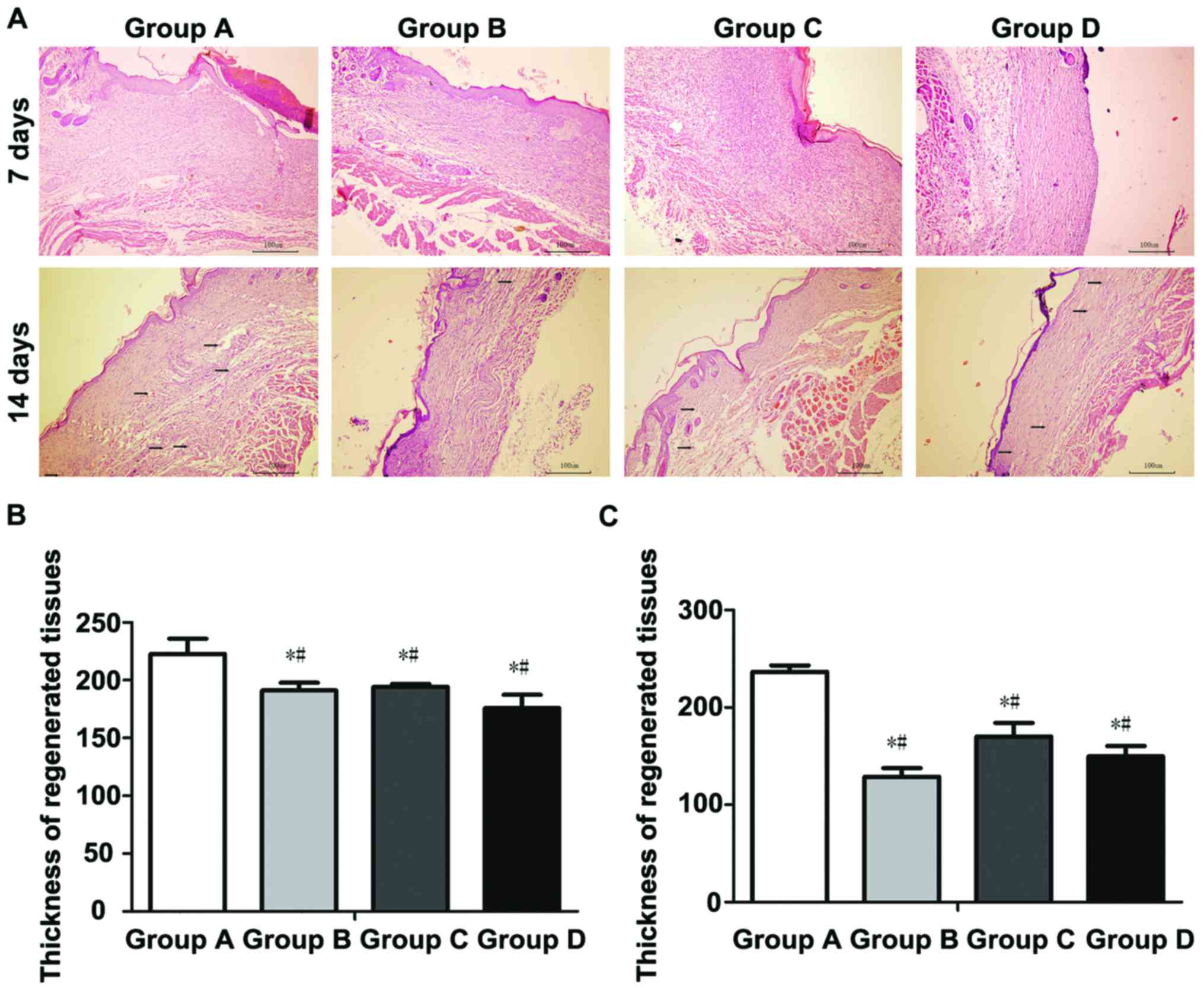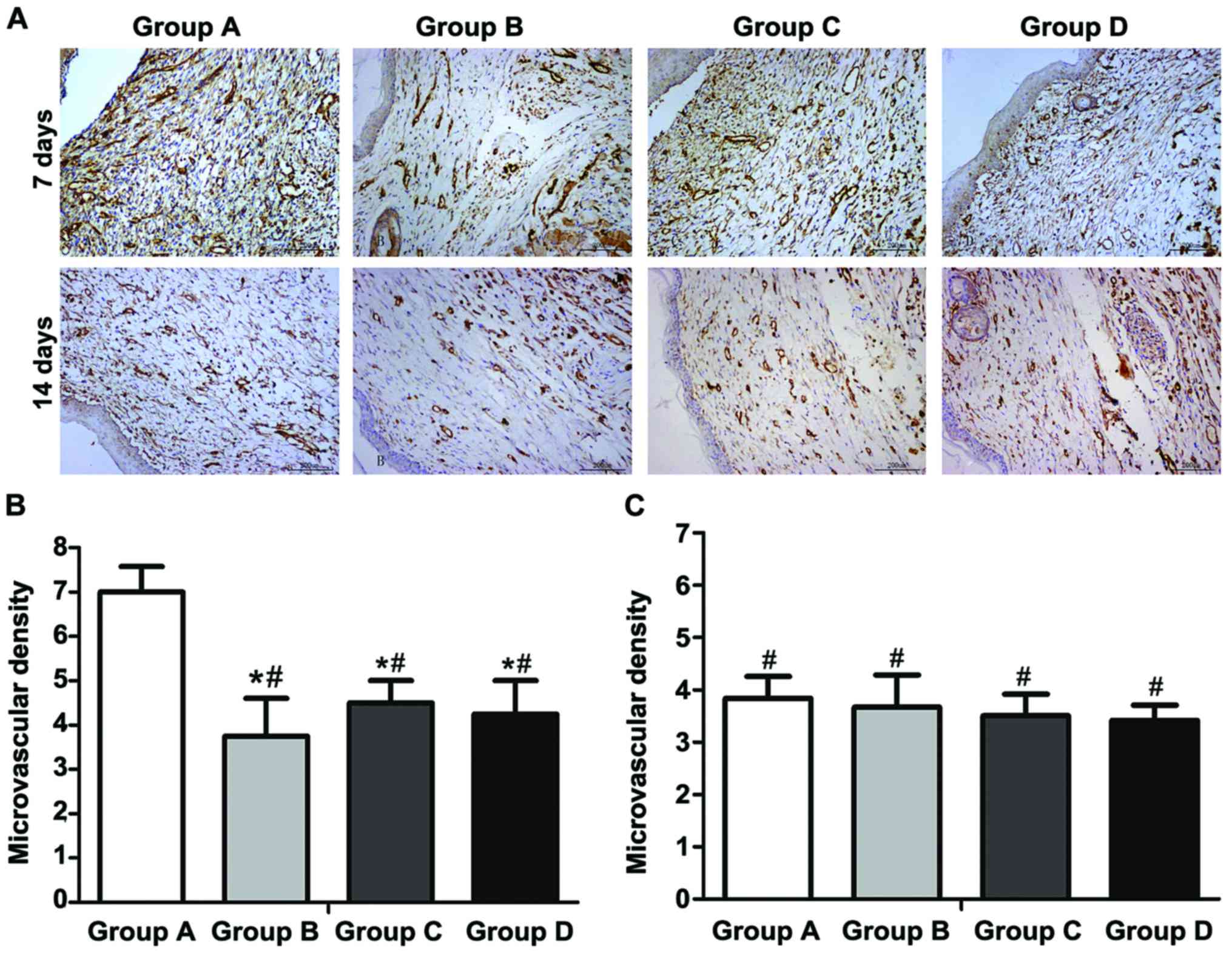|
1
|
Shingyochi Y, Orbay H and Mizuno H:
Adipose-derived stem cells for wound repair and regeneration.
Expert Opin Biol Ther. 15:1285–1292. 2015. View Article : Google Scholar : PubMed/NCBI
|
|
2
|
Ozpur MA, Guneren E, Canter HI, Karaaltin
MV, Ovali E, Yogun FN, Baygol EG and Kaplan S: Generation of skin
tissue using adipose tissue-derived stem cells. Plast Reconstr
Surg. 137:134–143. 2016. View Article : Google Scholar : PubMed/NCBI
|
|
3
|
Orbay H, Takami Y, Hyakusoku H and Mizuno
H: Acellular dermal matrix seeded with adipose-derived stem cells
as a subcutaneous implant. Aesthetic Plast Surg. 35:756–763. 2011.
View Article : Google Scholar : PubMed/NCBI
|
|
4
|
Kim HJ, Park SS, Oh SY, Kim H, Kweon OK,
Woo HM and Kim WH: Effect of acellular dermal matrix as a delivery
carrier of adipose-derived mesenchymal stem cells on bone
regeneration. J Biomed Mater Res B Appl Biomater. 100:1645–1653.
2012. View Article : Google Scholar : PubMed/NCBI
|
|
5
|
Zuk PA, Zhu M, Ashjian P, De Ugarte DA,
Huang JI, Mizuno H, Alfonso ZC, Fraser JK, Benhaim P and Hedrick
MH: Human adipose tissue is a source of multipotent stem cells. Mol
Biol Cell. 13:4279–4295. 2002. View Article : Google Scholar : PubMed/NCBI
|
|
6
|
Zhang X, Deng Z, Wang H, Yang Z, Guo W, Li
Y, Ma D, Yu C, Zhang Y and Jin Y: Expansion and delivery of human
fibroblasts on micronized acellular dermal matrix for skin
regeneration. Biomaterials. 30:2666–2674. 2009. View Article : Google Scholar : PubMed/NCBI
|
|
7
|
Huang SP, Hsu CC, Chang SC, Wang CH, Deng
SC, Dai NT, Chen TM, Chan JY, Chen SG and Huang SM: Adipose-derived
stem cells seeded on acellular dermal matrix grafts enhance wound
healing in a murine model of a full-thickness defect. Ann Plast
Surg. 69:656–662. 2012. View Article : Google Scholar : PubMed/NCBI
|
|
8
|
Wendt H, Hillmer A, Reimers K, Kuhbier JW,
Schäfer-Nolte F, Allmeling C, Kasper C and Vogt PM: Artificial skin
- culturing of different skin cell lines for generating an
artificial skin substitute on cross-weaved spider silk fibres. PLoS
One. 6:e218332011. View Article : Google Scholar : PubMed/NCBI
|
|
9
|
Reagan MR and Kaplan DL: Concise review:
Mesenchymal stem cell tumor-homing: Detection methods in disease
model systems. Stem Cells. 29:920–927. 2011. View Article : Google Scholar : PubMed/NCBI
|
|
10
|
Anthony DF and Shiels PG: Exploiting
paracrine mechanisms of tissue regeneration to repair damaged
organs. Transplant Res. 2:102013. View Article : Google Scholar : PubMed/NCBI
|
|
11
|
Singer NG and Caplan AI: Mesenchymal stem
cells: Mechanisms of inflammation. Annu Rev Pathol. 6:457–478.
2011. View Article : Google Scholar : PubMed/NCBI
|
|
12
|
Liu L, Chiu PW, Lam PK, Poon CC, Lam CC,
Ng EK and Lai PB: Effect of local injection of mesenchymal stem
cells on healing of sutured gastric perforation in an experimental
model. Br J Surg. 102:e158–e168. 2015. View
Article : Google Scholar : PubMed/NCBI
|
|
13
|
Maxson S, Lopez EA, Yoo D,
Danilkovitch-Miagkova A and Leroux MA: Concise review: Role of
mesenchymal stem cells in wound repair. Stem Cells Transl Med.
1:142–149. 2012. View Article : Google Scholar : PubMed/NCBI
|
|
14
|
Liu YL, Liu WH, Sun J, Hou TJ, Liu YM, Liu
HR, Luo YH, Zhao NN, Tang Y and Deng FM: Mesenchymal stem
cell-mediated suppression of hypertrophic scarring is p53 dependent
in a rabbit ear model. Stem Cell Res Ther. 5:1362014. View Article : Google Scholar : PubMed/NCBI
|
|
15
|
Wahl EA, Fierro FA, Peavy TR, Hopfner U,
Dye JF, Machens HG, Egaña JT and Schenck TL: In vitro evaluation of
scaffolds for the delivery of mesenchymal stem cells to wounds.
BioMed Res Int. 2015:1085712015. View Article : Google Scholar : PubMed/NCBI
|
|
16
|
Harasymiak-Krzyżanowska I, Niedojadło A,
Karwat J, Kotuła L, Gil-Kulik P, Sawiuk M and Kocki J: Adipose
tissue-derived stem cells show considerable promise for
regenerative medicine applications. Cell Mol Biol Lett. 18:479–493.
2013. View Article : Google Scholar : PubMed/NCBI
|
|
17
|
Kuo YR, Wang CT, Cheng JT, Kao GS, Chiang
YC and Wang CJ: Adipose-derived stem cells accelerate diabetic
wound healing through the induction of autocrine and paracrine
effects. Cell Transplant. 25:71–81. 2016. View Article : Google Scholar : PubMed/NCBI
|
|
18
|
Hiwatashi N, Hirano S, Mizuta M, Tateya I,
Kanemaru S, Nakamura T and Ito J: Adipose-derived stem cells versus
bone marrow-derived stem cells for vocal fold regeneration.
Laryngoscope. 124:E461–E469. 2014. View Article : Google Scholar : PubMed/NCBI
|
|
19
|
Yang J, Yamato M, Kohno C, Nishimoto A,
Sekine H, Fukai F and Okano T: Cell sheet engineering: Recreating
tissues without biodegradable scaffolds. Biomaterials.
26:6415–6422. 2005. View Article : Google Scholar : PubMed/NCBI
|
|
20
|
Sun Y, Chen WL, Lin SJ, Jee SH, Chen YF,
Lin LC, So PT and Dong CY: Investigating mechanisms of collagen
thermal denaturation by high resolution second-harmonic generation
imaging. Biophys J. 91:2620–2625. 2006. View Article : Google Scholar : PubMed/NCBI
|
|
21
|
Leonardi D, Oberdoerfer D, Fernandes MC,
Meurer RT, Pereira-Filho GA, Cruz P, Vargas M, Chem RC, Camassola
M, Nardi NB, et al: Mesenchymal stem cells combined with an
artificial dermal substitute improve repair in full-thickness skin
wounds. Burns. 38:1143–1150. 2012. View Article : Google Scholar : PubMed/NCBI
|
|
22
|
Iyyanki TS, Dunne LW, Zhang Q, Hubenak J,
Turza KC and Butler CE: Adipose-derived stem-cell-seeded
non-cross-linked porcine acellular dermal matrix increases cellular
infiltration, vascular infiltration, and mechanical strength of
ventral hernia repairs. Tissue Eng Part A. 21:475–485. 2015.
View Article : Google Scholar : PubMed/NCBI
|
|
23
|
King A, Balaji S, Keswani SG and
Crombleholme TM: The role of stem cells in wound angiogenesis. Adv
Wound Care (New Rochelle). 3:614–625. 2014. View Article : Google Scholar : PubMed/NCBI
|















